Situated in the Old Town, this is on the ground floor of a 1960s office block, built on the site of McCulloch & Young’s department store. Established in 1893, it was Stirling’s largest store, with frontages on Baker Street and Spittal Street. Baker Street was previously named Baxter’s Wynd. The bakers, or baxters, were one of Stirling’s seven ancient craft guilds. Their emblem was two crossed baker’s shovels, known as crossed peels.
Photographs and text about The Crossed Peels.
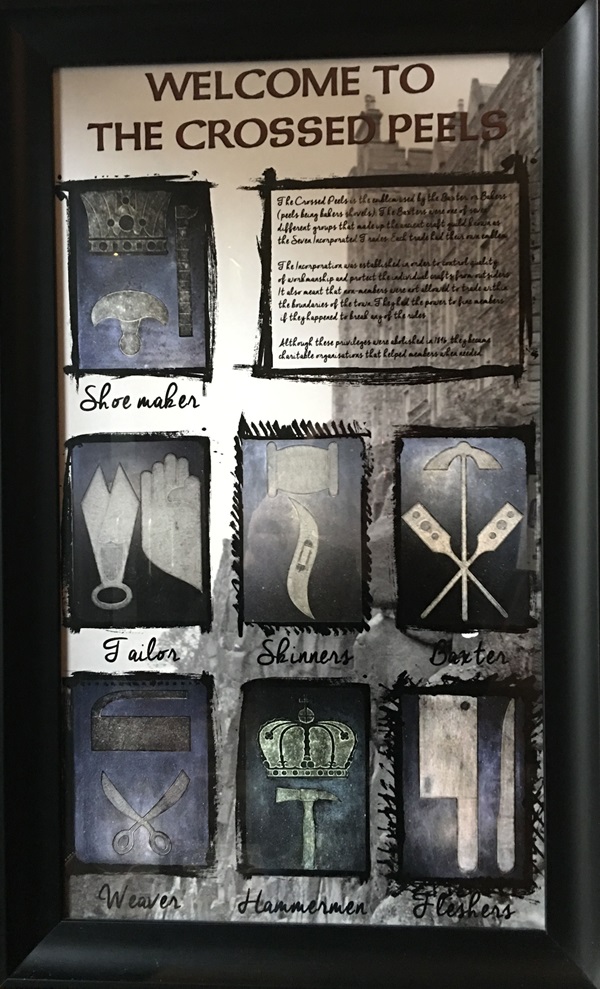
The text reads: The Crossed Peels is the emblem used by the baxters or bakers (peels being baker’s shovels). The baxters were one of seven different groups that made up the ancient craft guild known as the Seven Incorporated Trades. Each trade had their own emblem.
The incorporation was established in order to control quality of workmanship and protect the individual crafts from outsiders. It also meant that non-members were not allowed to trade within the boundaries of the town. They had the power to fine members if they happened to break any of the rules.
Although these privileges were abolished in 1896, they became charitable organisations that helped members when needed.
Prints and text about the history of Scotland.
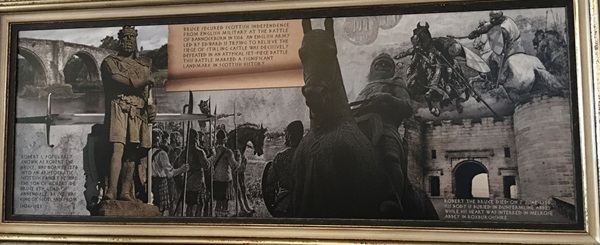
The text reads: Robert I, popularly known as Robert the Bruce, was born in 1274 into an aristocratic Scottish family. He was the son of Robert the Bruce 6th Lord of Annendale. Bruce was King of Scotland 1306-29.
Bruce secured Scottish independence from English military at the Battle of Bannockburn in 1314. An English army led by Edward II trying to relieve the siege of Stirling Castle was decisively defeated in an atypical set piece battle. This battle marked a significant landmark in Scottish history.
Robert the Bruce died on 7 June 1329. His body is buried in Dunfermline Abbey, while his heart was interred in Melrose Abbey in Roxburghshire.
A photograph and text about the Kinross Carriageworks.
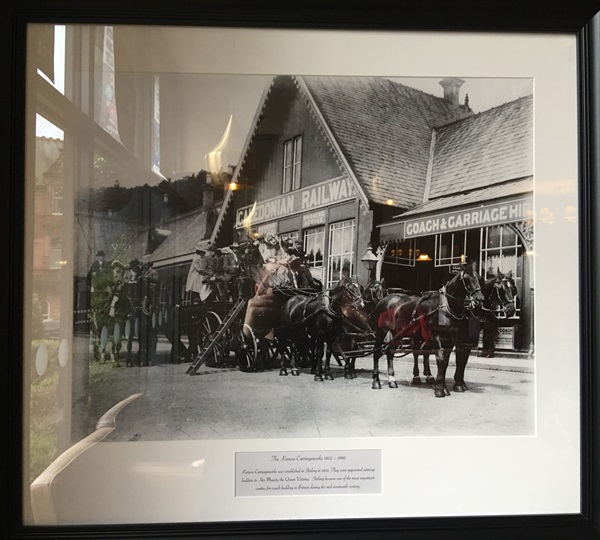
The text reads: Kinross Carriage Works was established in Stirling in 1802. They were appointed carriage builders to Her Majesty the Queen Victoria. Stirling became one of the most important centres for coach building in Britain during the mid nineteenth century.
An old railway poster advertising Stirling as a destination.
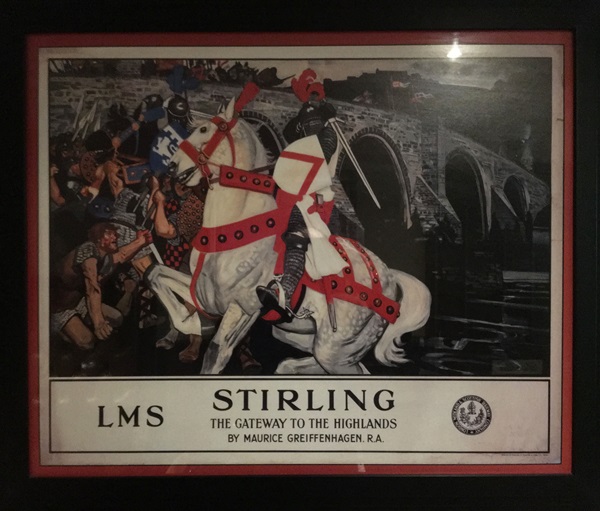
Text about the history of tartan, along with examples.
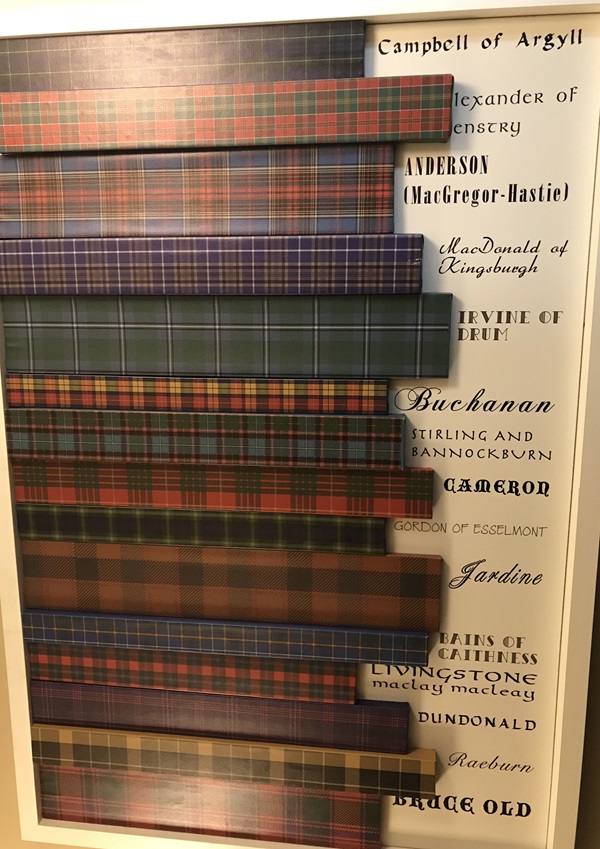
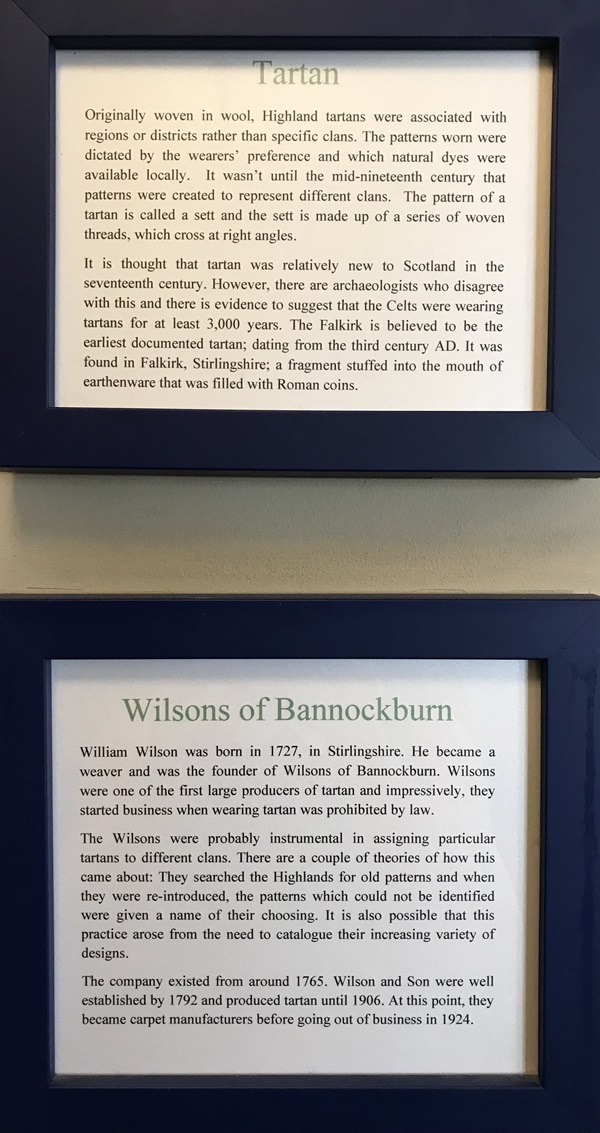
The text reads: Tartan
Originally woven in wool, Highland tartans were associated with regions or districts rather than specific clans. The patterns worn were dictated by the wearers’ preference and which natural dyes were available locally. It wasn’t until the mid nineteenth century that patterns were created to represent different clans. The pattern of a tartan is called a sett and the sett is made up of a series of woven threads, which cross at right angles.
It is thought that tartan was relatively new to Scotland in the seventeenth century. However, there are archaeologists who disagree with this and there is evidence to suggest that the Celts were wearing tartans for at least 3,000 years. The Falkirk is believed to be the earliest documented tartan; dating from the third century AD. It was found in Falkirk, Stirlingshire; a fragment stuffed into the mouth of earthenware that was filled with Roman coins.
Wilsons of Bannockburn
William Wilson was born in 1727, in Stirlingshire. He became a weaver and was the founder of Wilsons of Bannockburn. Wilsons were one of the first large producers of tartan and impressively, they started business when wearing tartan was prohibited by law.
The Wilsons were probably instrumental in assigning particular tartans to different clans. There are a couple of theories of how this came about: They searched the Highlands for old patterns and when they were re-introduced, the patterns which could not be identified were given a name of their choosing. It is also possible that this practice arose from the need to catalogue their increasing variety of designs.
The company existed from around 1765. Wilson and Son were well established by 1792 and produced tartan until 1906. At this point, they became carpet manufacturers before going out of business in 1924.
External photograph of the building – main entrance.
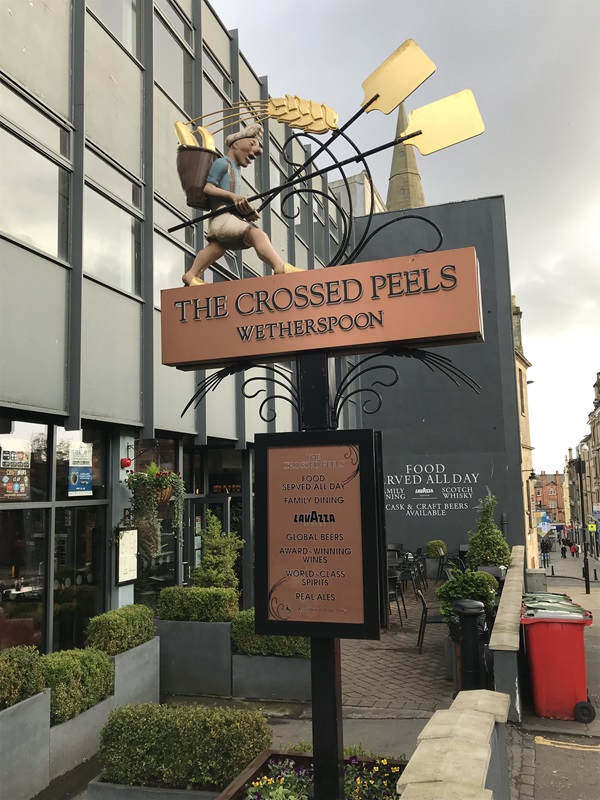
If you have information on the history of this pub, then we’d like you to share it with us. Please e-mail all information to: pubhistories@jdwetherspoon.co.uk